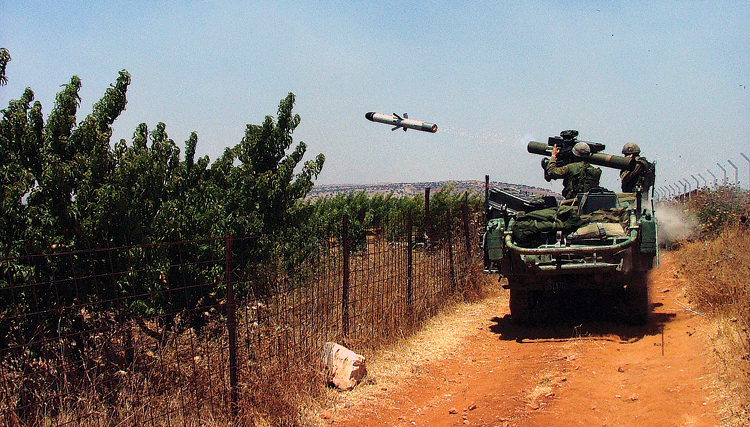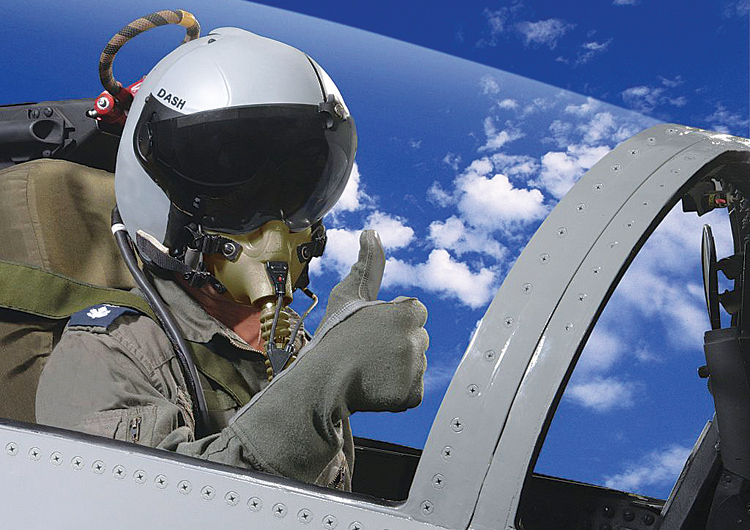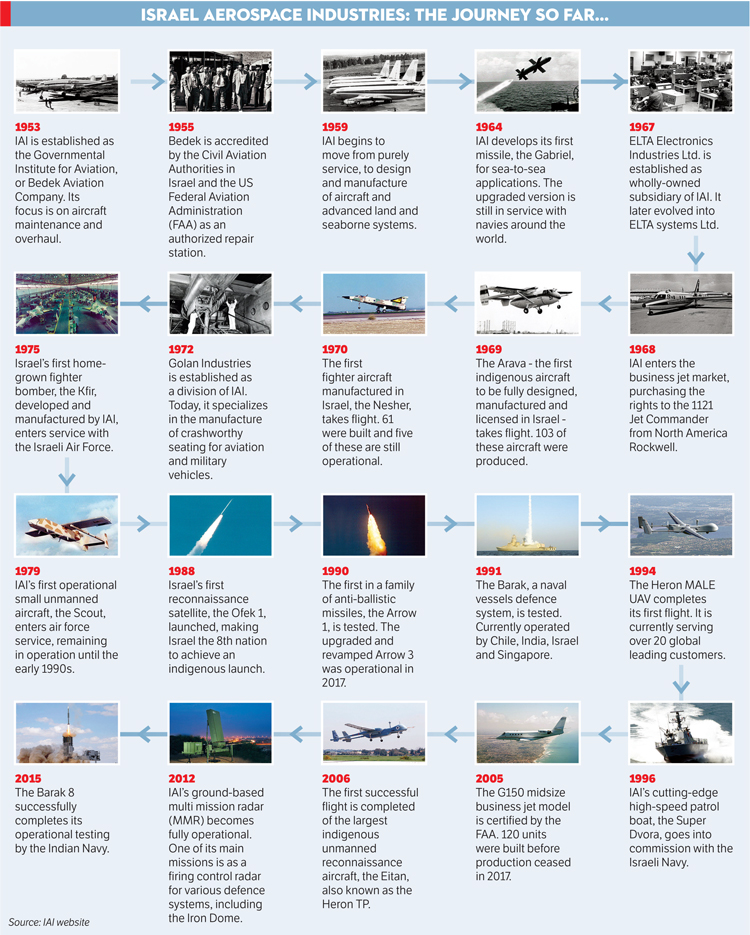INDIAN ARMED FORCES CHIEFS ON
OUR RELENTLESS AND FOCUSED PUBLISHING EFFORTS

SP Guide Publications puts forth a well compiled articulation of issues, pursuits and accomplishments of the Indian Army, over the years

I am confident that SP Guide Publications would continue to inform, inspire and influence.

My compliments to SP Guide Publications for informative and credible reportage on contemporary aerospace issues over the past six decades.
Israeli Muscle
Israel’s defence and aerospace manufacturing sector that are doing a stellar job, working on leading technologies and developing world class products

Israel has proved to be one of India’s most reliable military suppliers since diplomatic relations were established between the two countries in 1994. SP’s Aviation takes a look at some key military technologies available with Israel’s leading defence and aerospace companies.
IAI, BIG BOY OF ARMS INDUSTRY
IAI, the fountainhead of Israel’s defence and aerospace industry, has been at the forefront of India-Israel military cooperation since diplomatic relations were established between the two countries in 1994.
After making a beginning with tactical Unmanned Aerial Vehicles (UAVs) Searcher and Heron in India, it has been closely involved with programmes of strategic importance, including the Ballistic Missile Development programme for which it provided the Green Pine radar, AWACS by mating its ELW 2090 Phalcon radar on to a Russian Il-76 heavy lifter, the Barak point missile defence system for Indian warships followed by the more capable MRSAM for which it provided the radars, launchers and fire control systems.
IAI continues to be poised for the next stage in unmanned aerial systems (UAS) and anti-missile systems.
Strategic UAVs
INNOVATION IS THE KEY
“The important take away from the Israeli Aerospace and Defence Industries is that in the first instance, to be successful in this regime on the global scene, size of the nation is not relevant. Also, that innovation is the key to the route of development and Israel has always promoted both innovation and technology. The one notable feature that stands out in the Israeli innovation system, is the way that Israel accepts failure and also that failed entrepreneurs are not stigmatised.
The dynamism, pioneering spirit and constant pursuit of excellence and innovation truly make Israel the original ‘start up nation’. And this is an important lesson apart from many others that India needs to learn from Israel.”
—Air Marshal B.K. Pandey (Retd)
Heron TP represents the Medium Altitude Long Endurance (MALE) UAVs capability which has so far been wielded only by the Americans. It can fly persistent missions for up to 30 hours at a height of 45,000 feet, remotely directed for multiple missions through a secure satellite communication (SATCOM) link.
While its publicly pitched as “a robust and combat proven system for complex intelligence, surveillance, target acquisition and reconnaissance (ISTAR) over any terrain, in any weather conditions”, the word on the street is that this drone has a combat version, making it the only available non-American UCAV. The manufacturer confirms that its strategic UAVs can carry “various payloads”.
IAI brings four decades of experience in building unmanned systems, which have accumulated 1.7 million operational flying hours over mountains, deserts, and seas, into its MALE UAVs, which represents a different league in unmanned combat systems.
A range of loitering munitions including the Harop and Harpy provide multiple options to destroy enemy targets including radars through the self-destruct flight mode.
Battlefield Missile Shield
The Barak ER extends the range of the proven naval and landbased anti-missile system to 150 km, providing the theatre antimissile capability in a networked environment.
This advanced air and missile defence system provides an integrated solution for multiple and simultaneous aerial threats – including cruise missiles – from different sources and ranges.
The induction of the Barak systems by India began with the Barak-1, which provides a short-range shield to its warships against enemy missile attacks. The MRSAM, jointly developed with the DRDO and also known as the Barak 8, extends India’s battlefield missile interception range to 70 km. This capability corresponds to that of the Barak LRAD. The MRSAM is now part of essential weaponry for all major newly-built Indian warships.
Increasing the range of a missile shield for Indian military assets to 150 km would appear a natural progression.
Ballistic Missile Defence System
The Arrow Weapon System (AWS) was the world’s first operational, national, multi-tier Anti-Tactical Ballistic Missiles (ATBM) defence system. With its Arrow 2 and Arrow 3 interceptors, this modular air defence system detects, tracks, intercepts and destroys incoming Terminal Ballistic Missiles carrying a range of warheads to provide a ballistic missile shield to population centres and strategic assets.
IAI claims new technologies in the Arrow 3 interceptor to intercept and destroy the newest, longer-range weapons of mass destruction.
The Arrow 3 integrates into the Arrow Weapon System (AWS) in conjunction with the Arrow 2 interceptor to enable upper-tier multiple engagement capability.
Many observers reckon that India’s own multi-tier Ballistic Missile Defence System could be inspired, at least in part, from the Arrow, which also uses the Green Pine radar as its backbone.
RAFAEL, PROVEN IN COMBAT
The game-changing success of the Litening targetting pod for laser-guided bombing in the Kargil War and the recent use of the SPICE 2000 precision glide bombs in the Balakot air strike have made these weapon systems part of Indian military folklore. The manufacturer of both these systems, Rafael Advanced Defence Systems, can take a bow for providing the right solutions for India’s pressing military requirements. Rafael is an armaments giant whose precision strike products and technologies are wielded by leading militaries across the world.
Smart Bomb Family
SPICE Family (250, 1000, 2000) of stand-off, autonomous, air-toground weapon systems that attack targets with pinpoint accuracy and at high attack volumes, without depending on GPS navigation in GPS-denied environments. These use a unique scene-matching technology for precise bombing at ranges of up to 100 km.
A unique Artificial Intelligence enabled Automatic Target Recognition and Moving Target Detection homing capability based on electro-optic scene-matching algorithms make the SPICE highly accurate and lethal, besides making it assurance of low collateral damage.
Targeting Pods
The Litening is the world’s most used target designation pod, with 1,900 units in use by 27 air forces across the world. Rafael teamed up with ELTA to equip the Litening with a synthetic aperture radar (SAR) to give it a quantum leap in the stand-off capability domain. This addition of SAR to an electro-optical pod solves the problem of target identification when flying above clouds, giving it true day-night, all weather capability. The pods are equipped with a laser designator, and laser marker for joint missions, as well as an optional Data Link for stand-off ranges.
Litening is operational on over 25 types of aircraft, including the F-16, F-15, F/A-18, B-2, Jaguar, Typhoon and the Gripen, besides the Sukhoi-30, Mirage 2000, MiG-21 and 27 and the LCA.
The Reccelite is an advanced pod, and termed a game changer. Besides the addition of the SAR as in the Litening to overcome the challenge of cloud cover, the Reccelite consists of an airborne ISR pod, a wideband digital Data Link, and a Ground Exploitation System which enables the mission plan to be uplinked during flight to hit targets of opportunity. It also provides high resolution images for a full aerial intelligence picture, making it a real-time multi-spectral reconnaissance system. It is used by 10 air forces, and is operational on F-16, F/A-18, Gripen, Heron 1, Jaguar, Reaper, Tornado, and Typhoon.
Air-to-Air & Air Defence Missiles
The Python-5 is a full sphere advanced air-to-air Infra Red missile and air defence missile. The I-Derby is a moderately priced Beyond Visual Range, SDR seeker, new generation air-to-air and air defence missile.
Air Defence
The SPYDER SR/MR family of short and medium range air defence systems using the I-Derby and Python-5 missiles. This commonality between the use of the missiles for air defence and on front-line fightersis one of the main features and advantages of the system. SPYDER is in operation with five militaries, including the IAF.
The Drone Dome is a Counter-Unmanned Aerial System (C-UAS), designed to detect, track, and neutralise drones either by jamming their communication or destroying them using a high-powered laser. Recently supplied to the British forces, it is being offered to Brazil for a range of civil applications.
Precision Tactical Missiles
The SPIKE family of multi-purpose, multi-platform tactical missile systems address a range spectrum between 150m and 30 km. Over 30,000 SPIKE missiles have been sold to 31 nations, and over 5,500 fired in tests and combat. The Indian Army also recently ordered the first lot of SPIKE, manportable missiles. It is being offered for arming the Fennec and Panther helicopters.

ELBIT, AVIONICS GAME CHANGER
Elbit Systems, Israel’s largest defence electronics company, is a global leader in avionics and airborne equipment. It operates in the areas of aerospace, land and naval systems, command, control, communications, computers, intelligence surveillance and reconnaissance (C4ISR), unmanned aircraft systems (UAS), advanced electro-optics, electro-optic space systems, electronic warfare suites, signal intelligence (SIGINT) systems, data links and communications systems and radios.In 2019, Elbit Systems purchased the night vision business of Harris Corp of the US for a reported $350 million.
DASH III Helmet Sight & Display
Its much talked about technology is the Display & Sight Helmet System DASH III and cueing system, which enables a combat pilot to aim air-to-air and air-to-ground weapons to a target merely by looking at it. This is a key differentiator in dogfights or close combat situations.

The concept goes beyond the headup displays (HUD) on a pilot’s visor. This provides the pilot with situation awareness, an enhanced image of the scene, and allows him to direct weapon systems to the direction his head is pointing towards. Applications which allow cuing of weapon systems are referred to as helmet-mounted sight and display (HMSD) or helmet-mounted sights (HMS).
Israel, a very small country, has gradually and determinedly developed one of the largest aerospace and defence complex which has become the benchmark for self-reliance and aspiration for many countries to follow.
Israel, a very small country, has gradually and determinedly developed one of the largest aerospace and defence complex which has become the benchmark for self-reliance and aspiration for many countries to follow.
Enabling Choice of Missiles
This technology enables incorporation of diverse missile and weapon systems on to an aircraft without seeking changes in the airborne radar. In India’s case, this technology increases its options for acquiring airborne weapons beyond the country from which the aircraft has been acquired.
Elbit’s avionics and HMD is reported to be part of the India Specific Enhancements in the Rafale fighter contract. It has also been involved with the avionics suites of the Sukhoi-30MKI and India’s Light Combat Aircraft (LCA) Tejas. Elbit HMDs are even reported to have enabled the integration of Russian Beyond Visual Range (BVR) missiles on to the IAF’s Mirage 2000 fleet, when European solutions were no available. It is also central to the IAF’s plan to standardise short-range missiles across various fleets, and could make the integration of MBDA ASRAAMs possible on to the Su-30MKIs.
The DASH III also features in the upgraded MiG-21 BISON, one of which shot down a Pakistan Air Force F-16 on February 27, the first time ever that an F-16 was shot down in combat. Elbit has also supplied Apache Aviator Integrated Helmets for the US Army helicopter fleet. Other popular Elbit technologies include the Anvis Head-up Display, the HeliC3om integrated and digital C3 and mission management system. The first civilian use of HMD on aircraft was the Elbit SkyLens HMD on ATR 72/42 airplane.
There are many other companies in Israel’s defence and aerospace manufacturing sector that are doing a stellar job, working on leading technologies and developing world class products. Israel, a very small country, has gradually and determinedly developed one of the largest aerospace and defence complex which has become the benchmark for self-reliance and aspiration for many countries to follow.






